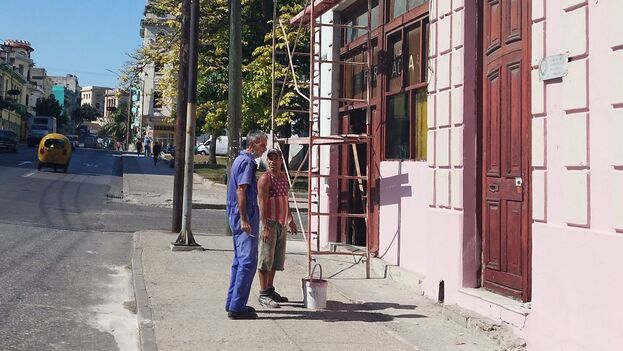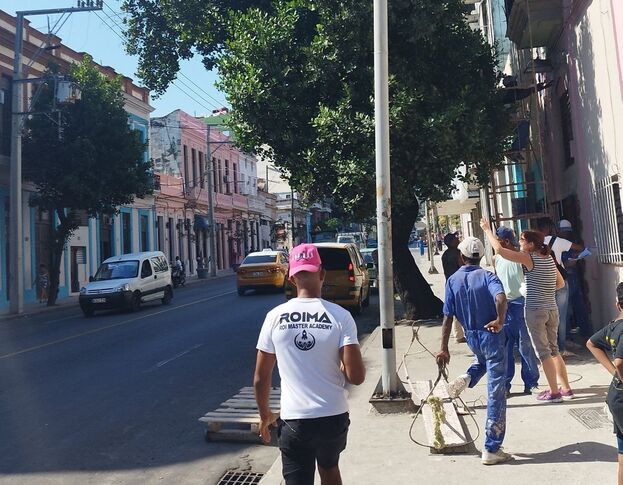
![]() 14ymedio, Natalia Lopez Moya, Havana, 25 January 2023 — “They are applying rouge to San Lázaro street again,” lamented a neighbor from Centro Habana this Tuesday morning. The facades of the long avenue are being painted so that, on the night of January 27, it will house the official March of the Torches, with the presence of Miguel Díaz-Canel.
14ymedio, Natalia Lopez Moya, Havana, 25 January 2023 — “They are applying rouge to San Lázaro street again,” lamented a neighbor from Centro Habana this Tuesday morning. The facades of the long avenue are being painted so that, on the night of January 27, it will house the official March of the Torches, with the presence of Miguel Díaz-Canel.
In the face of what will happen on Friday, brigades of builders have erected scaffolding, hauled paint and begun to brush on a wall without cracks or on a balcony about to collapse. As every year around this time, it is a matter of dressing up the street so that the high-ranking figures of the government who walk through it on the eve of José Martí’s birth get an impression that is very different from reality.
“I came to eat at this little tavern but it is difficult to go in because they have erected scaffolding on the door, the drops of paint fall on the clothes of the passersby,” a young woman who has seen several of “these retouching processes” explained to 14ymedio that it won’t last long “because they use poor quality paint and they don’t do it very carefully either.” The colors are also very limited, so far, a poor palette of blues and pinks.
“I came to eat at this little tavern, but it is difficult to enter because they have put a scaffolding on the door, the drops of paint fall on the clothes of the passersby”
“It is outrageous how they are plastering the corners of the balconies that have partially detached from the buildings and then they paint them, everything is a coverup of reality, where it can be seen, but, of course, not a coat of paint or a spoonful of cement inside.”
The painting of the facades is only an advance. Before Friday, the street will be filled with a strong security operation that traditionally begins up to two days before the March at El Vedado and Centro Habana, neighborhoods where the University of Havana is located, the venue for the event that will begin around 8:30 p.m.
In recent years, the country has mourned various tragedies in the days leading up to this celebration. A tornado caused great destruction in areas of the capital in 2019, leaving eight dead, 200 injured, and more than a thousand homes destroyed. In 2020, the collapse of a balcony caused the death of three girls in Old Havana, although the government did not suspend the official act despite requests from citizens.

In 2021 it was suspended due to the pandemic, and last year it became a display of the regime’s political muscle after the popular protests of July 11, 2021.
The first March of the Torches was organized on January 27, 1953 as a tribute to José Martí on the 100th anniversary of his birth. Although Fulgencio Batista’s government did not grant permission to carry it out, the students marched without the police intervening.
After 1959, the pilgrimage became a governmental act in which the ruling party participated, with the presence of the greatest leaders of the Communist Party, the University Student Federation and representatives of other political organizations of the regime.
Many young university students attend due more to pressure than conviction, although it is very common for them to make an appearance for a few minutes and then end up escaping through the streets where the caravan goes through.
Translated by Norma Whiting
____________
COLLABORATE WITH OUR WORK: The 14ymedio team is committed to practicing serious journalism that reflects Cuba’s reality in all its depth. Thank you for joining us on this long journey. We invite you to continue supporting us by becoming a member of 14ymedio now. Together we can continue transforming journalism in Cuba.
